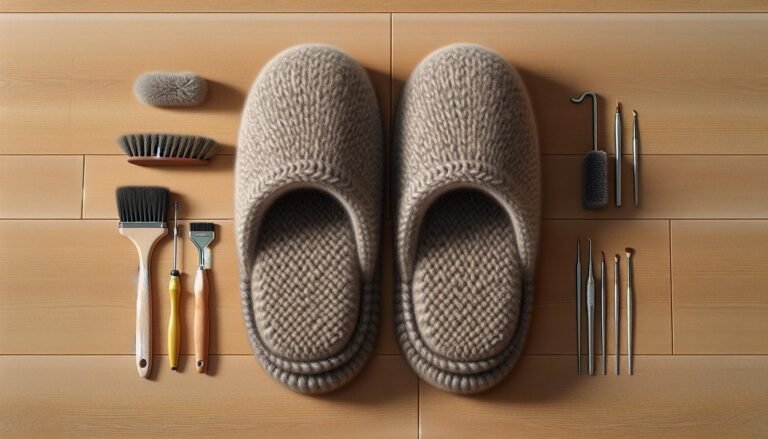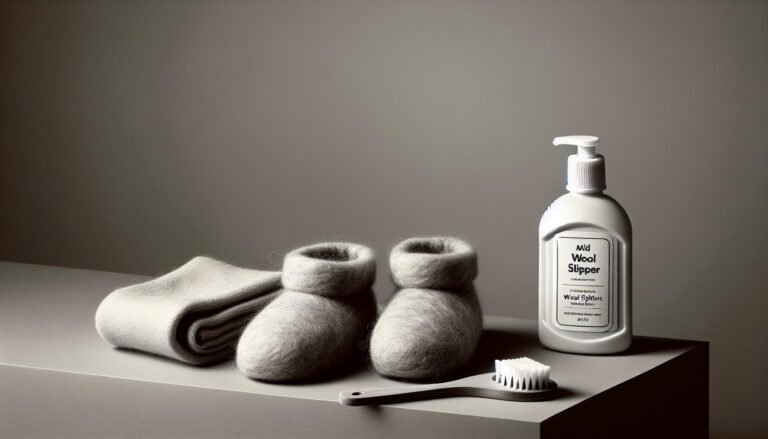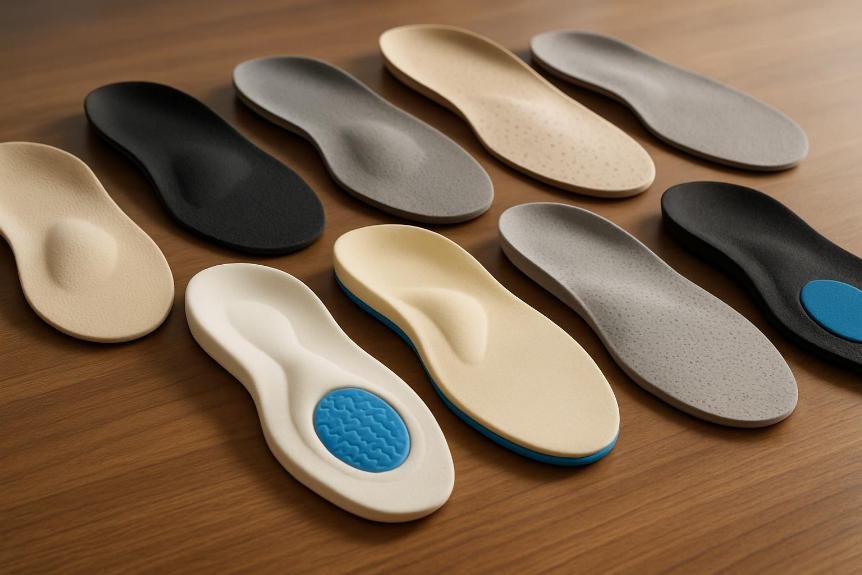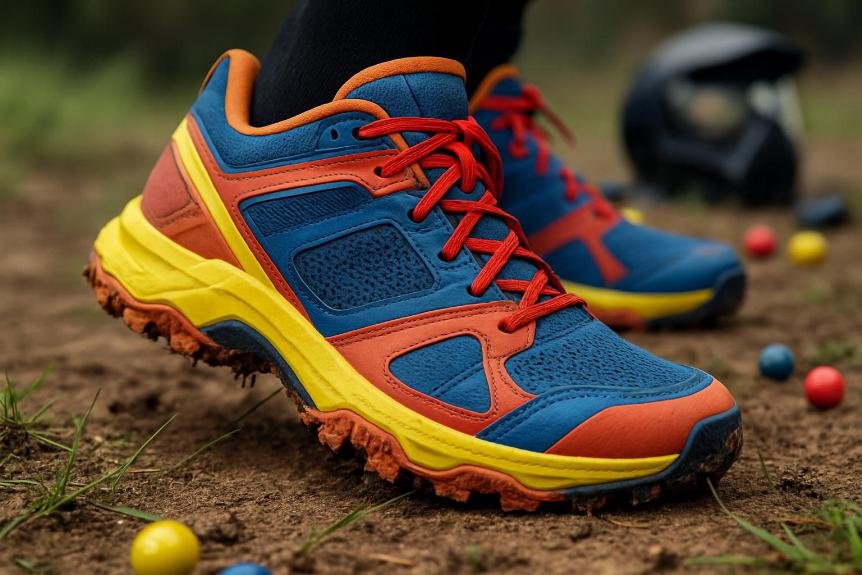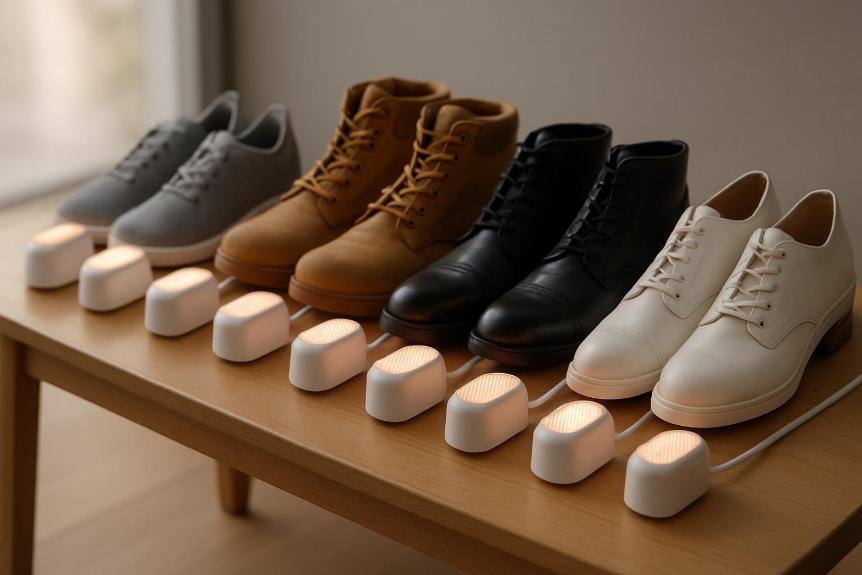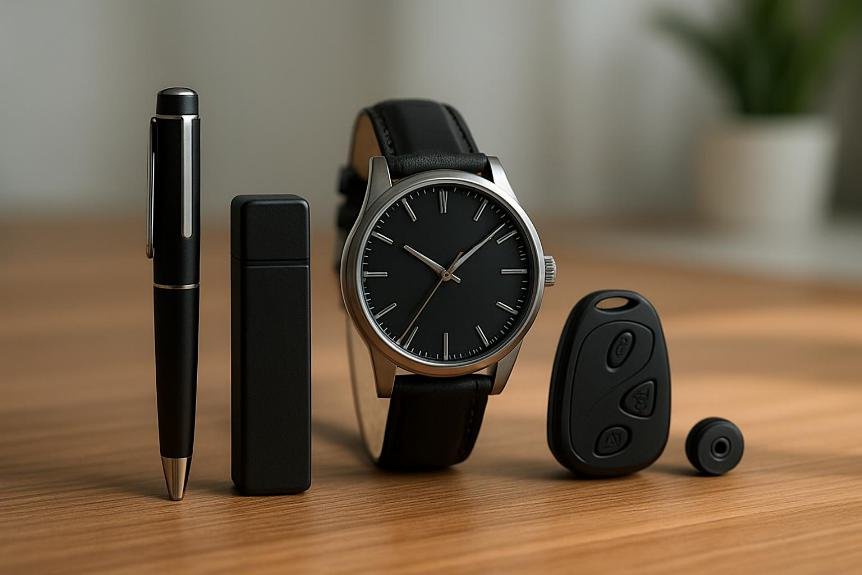How to Stretch Leather Shoes: A Simple Guide to Comfort
Leather shoes are a timeless addition to any wardrobe, offering durability and style. However, they often require a breaking-in period to fit comfortably. Stretching leather shoes is a practical solution for a better fit and can be done at home with simple techniques and tools. It’s important to understand the nature of leather and to approach the stretching process with care to avoid damaging the shoes.
For many, leather shoes can be quite snug when first purchased, and this is where the art of stretching comes in. Various methods, including the use of shoe stretchers, sprays, and household items, provide solutions to this common issue. It’s crucial to take preparatory steps such as cleaning and conditioning the leather before attempting any stretching methods to ensure that the shoes remain in prime condition.
Key Takeaways
- Stretching leather shoes improves fit and comfort.
- A range of methods and tools can be used to stretch leather safely at home.
- Proper aftercare ensures the longevity of stretched leather shoes.
Understanding Leather Shoes
When it comes to leather shoes, acknowledging the distinct properties of leather and ensuring a proper fit are fundamental. These aspects are pivotal for both the longevity of the footwear and the comfort of the wearer.
Properties of Leather
Leather is a durable and flexible material created by tanning animal rawhides and skins. The fibers in leather give it strength and breathability, making it an ideal material for shoes. It’s the interwoven nature of these fibers that allows leather to stretch and mold to the shape of the foot, providing a comfortable fit over time. However, the extent to which leather can stretch will depend on both the width, type and quality of the leather.
- Full-grain leather: This is the highest quality of leather with fibers that are tightly packed, giving it superior durability and moisture resistance.
- Top-grain leather: A more refined version where the top layer has been sanded down, which makes it thinner and more pliable.
- Genuine leather: Typically made from several layers, including leftovers from higher grades of leather, it is less durable and will stretch more easily.
Importance of Proper Fit
Finding the correct fit is crucial as leather shoes will only stretch to a certain degree for a comfortable fit. The shoes should feel snug but not overly tight or uncomfortable from the start. Over time, the leather will contour to the foot, but if the fit is incorrect, this will not lead to comfort. Instead, it can cause discomfort and even damage the shoe’s structure.
- Width and Length: Shoes should accommodate the widest part of the foot while leaving enough room in the toe box.
- Arch Support: Leather footwear often provides more support to the foot’s arch, adapting over time to its specific shape.
Selecting leather shoes that fit correctly from the beginning ensures the natural stretching of the leather enhances the fit rather than detracting from it. This not only maximizes the lifecycle of the shoes but also promotes foot health and comfort for the wearer.
Preparatory Steps for Stretching Leather Shoes
Before attempting to stretch leather shoes, it’s essential to gather the right tools and assess the condition of the leather to ensure effective and safe expansion of the footwear.
Selecting the Right Shoe Stretcher
In order to effectively stretch leather shoes, one must select a shoe stretcher that is compatible with the shoe type. There are various stretchers available, such as one-way and two-way stretchers, which are designed to alter the shoe’s width and length respectively. Ensure the stretcher chosen is made from sturdy materials and fits the size and shape of the pair of shoes in question.
Assessing the Leather Condition
Prior to stretching, the leather’s condition must be evaluated to determine the safest method of expansion. If the leather is dry or brittle, the usage of a leather conditioner may be necessary to restore moisture and prevent cracking or damage. This ensures the leather remains supple and minimizing the risk of tearing during the stretching process.
Preparing the Shoes for Stretching
Preparing the shoes for stretching involves a thorough cleaning and a moisturizing with a leather conditioner if needed. This not only cleans any dirt or buildup but also makes the leather more receptive to stretching. For optimal results, the shoes should be left to absorb the conditioner for at least a few hours before using the shoe stretchers.
By following these steps closely, one can prepare tight pair of leather shoes properly to be stretched, preserving the material while achieving a comfortable fit.
Manual Stretching Methods
This section outlines three effective manual techniques used for stretching leather shoes to improve fit and comfort. They include the use of a shoe stretcher, a stuffing technique, and a method that utilizes the expansion properties of water when frozen.
Using a Shoe Stretcher
One of the most precise methods for stretching leather shoes involves using a shoe stretcher, a tool designed specifically for this purpose. To properly stretch the bag inside the shoes, one inserts the stretcher into the shoe and then turns the handle to expand it. Over time, this causes the leather to stretch out to the desired width or length.
Stuffing Technique
For a more hands-on approach, they can opt for the stuffing technique. This entails filling the interior of the shoes with materials to exert outward pressure on the leather. Materials such as rolled-up newspapers or a pair of thick wool socks work well for sock method; they are inserted tightly into the shoes and left overnight to facilitate the stretching process.
The Freezer Method
Lastly, the freezer method leverages the expanding quality of water as it freezes to slowly stretch leather shoes. They fill sealable plastic bags with water, place them into the tight areas of the shoe, and then place the shoes into the freezer. As the water turns to ice, it expands, causing the leather to stretch. This method must be approached with care to avoid damaging the shoes.
Alternative Stretching Techniques
When looking to expand the fit of leather shoes, individuals can consider several DIY approaches that leverage heat, alcohol, and the simple act of walking. Specific methods focus on safely altering the otherwise new leather shoes to accommodate areas of discomfort such as bunions and corns.
Heat Application Method
Applying heat is a proven way to stretch leather shoes. One can use a hair dryer or blow dryer to warm the shoes uniformly. Post-heating, they should immediately put on the shoes and walk around to encourage the material to stretch. It is important to use the dryer for short intervals to prevent leather damage.
Alcohol-Based Stretching Solution
A homemade shoe stretch spray can be created by mixing equal parts of rubbing alcohol and water in a spray bottle. This solution should be applied sparingly to the interior of the shoes, particularly around tight areas. After application, wearing the shoes around the house can help the leather conform to the foot’s shape without the cost of a professional cobbler.
Wearing Thick Socks
Finally, one can simply don perfect pair of thick socks, or several pairs, and wear the shoes at home. The added bulk from the thick socks can aid in stretching the leather. Repeatedly wearing thick socks while walking in the shoes can gradually alleviate pressure points on bunions and corns, providing a more comfortable fit.
Aftercare for Stretched Leather Shoes
Proper aftercare is essential to maintain the integrity and comfort of stretched leather shoes. After stretching, applying a leather conditioner is vital, as well as ensuring that the shoes do not revert to their original size.
Leather Conditioning After Stretching
Once leather shoes have been stretched, they should be treated with a leather conditioner to restore moisture and flexibility to the fibers. This process helps the leather stay supple and prevents cracking. Apply the conditioner evenly, paying close attention to areas that have undergone significant stretching.
Maintaining the Stretch
To maintain the new fit of the leather shoes, regularly using a shoe stretching spray can be beneficial. This type of spray helps the leather retain its elasticity and remain in the stretched state. It’s also advisable to occasionally wear the new shoes along with thick socks for short periods to ensure they do not shrink back over time.
When to Visit a Professional
If the shoes need a significant or complex adjustment, visiting a cobbler or other footwear professional is recommended. They can provide specialized services such as targeted stretching or repairs to overstressed seams. For persistent fit issues or valuable leather footwear, professional attention can ensure the longevity and wearability of the shoes.
Considerations and Warnings
Before attempting to stretch leather shoes, it’s important to consider the potential risks involved with DIY methods, recognize the limitations of shoe sizes, and know when it’s time to seek professional help. These steps are crucial to maintaining the integrity of the footwear and ensuring a proper fit to avoid discomfort or damage.
Potential Risks of DIY Methods
When stretching leather shoes at home, there’s always a risk of damaging the material, especially if techniques are applied incorrectly or hastily. Overstretching can lead to a permanent misshape of the shoe or weaken the structure, potentially causing tears or leather warping. Using inappropriate tools like hairdryers for heat application may also dry out the leather, leading to cracks and brittleness. For delicate leather footwear, such as leather pumps or high heels, more caution is needed due to their intricate construction.
Understanding Shoe Size Limitations
Leather shoes can indeed be stretched for a better fit, but this has its limits. Typically, shoes can be stretched up to a half-size larger. However, they cannot be resized entirely. Expecting a full-size change can lead to disappointment and potentially ruin the footwear. When using a shoe stretcher, ensure it matches the shoe’s size and shape to prevent overstretching or uneven expansion, which could cause blisters or discomfort.
Knowing When to Seek Professional Help
While there are several at-home methods to stretch shoes for wide feet, intricate footwear like leather boots sometimes require the expertise of a cobbler or professional. They have the tools and experience to stretch shoes without compromising quality. If the fit issue is severe or if the shoes are of high value, it is wise to invest in professional services. A professional can also provide advice to prevent issues with fit in future purchases.
Advanced Techniques and Tools
For individuals seeking a more precise and potentially faster way to stretch their leather shoes, there are several advanced techniques and tools available. These methods require the use of specialized products or devices designed specifically for leather shoe expansion.
Commercial Stretching Sprays
Commercial stretching sprays, like shoe stretching spray, offer an immediate solution to induce expansions in snug leather shoes. When applied, these stretch sprays moisten the bottom stretch your leather shoes, making it suppler and more amenable to stretching. Here’s a quick guide to using them:
- Apply the Stretching Spray: Generously spray the inside and outside of the tight areas of the leather shoe.
- Wear the Shoes: Put on a pair of thick socks and wear the shoes while walking until the spray dries.
Mechanical Stretching Devices
Mechanical devices can apply persistent, even pressure to stretch leather shoes. These devices include adjustable shoe trees, which are inserted into the shoe and adjusted to apply outward pressure to the leather, encouraging it to stretch. The steps include:
- Insert the Device: Place the mechanical stretcher inside the snug area of the shoe.
- Adjust the Device: Tighten the device to stretch the leather gradually. Leave it in for several hours for best results.
Customizable Shoe Stretchers
Customizable shoe stretchers are similar to adjustable shoe trees but often include additional features for a customized shoe stretch out. These expert tools cater specifically to areas like the toe box or the sides of the shoe that need expansion. They may come with various attachments for precision stretching. Using them involves:
- Insert the Stretcher: Place the stretcher inside your shoe, fitting it snugly against the problem areas.
- Expand the Stretcher: Turn the knob to widen the stretcher, thereby stretching the leather shoe gradually. Leave the stretcher in place as recommended, typically overnight.
By investing in new pair with these advanced stretching tools and sprays, one can achieve a more tailor-fit shoe, enhancing comfort without compromising the integrity of the leather.
Final Thoughts on Leather Shoe Stretching
Stretching leather shoes can be a straightforward process if done properly. One should always begin with gentle methods to ensure the integrity of the leather. Freezing is a popular technique, where the expansion of water as it becomes ice can help gently widen shoes.
For a more traditional approach, shoe stretchers are handy tools designed to elongate and widen specific areas of a shoe. They are especially useful for targeting precise problem spots and can gradually increase a shoe’s size for a better fit.
Conditioning the leather periodically not only preserves its texture and appearance but also assists in keeping it supple and more amenable to stretching.
Here’s a short recap of approaches and key pointers to remember:
- Freezing Method: Fill bags with water, place them in the shoes, and freeze.
- Shoe Stretcher: Insert into the shoe, adjust to desired width and length.
- Walking: Wear the shoes at home to gradually stretch the leather.
Remember, patience and care are paramount when attempting to stretch leather shoes. Actions to stretch your shoes should be gradual to avoid damage. It’s advisable to research or consult a professional before starting the stretching process, especially for expensive or delicate footwear.
When in doubt, it’s always better to seek professional assistance rather than risk damaging the shoes. With the right method, most leather shoes can become more comfortable, providing a better fit for daily wear.
Frequently Asked Questions
This section addresses common inquiries about methods for stretching leather shoes to fit comfortably and improve their overall fit.




